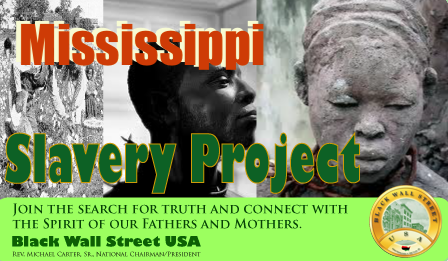Rooted in the fertile Delta and Black Belt regions, slavery in Mississippi was built upon the labor of hundreds of thousands of African-descended men, women, and children whose unpaid work fueled the cotton empire, enriched white landowners, expanded the wealth of northeastern investors, and laid the infrastructure for the Southern slave economy that would become globally influential. The Mississippi slave economy was not an isolated engine of local labor; it was a critical part of an expansive slavery industrial complex that reached Wall Street banks, Northern textile mills, European insurers, and domestic academic institutions.
Mississippi's entry into the Union in 1817 came on the heels of an era of expanding cotton production that would turn the state into one of the richest in the country, at least for its white planter class. The invention of the cotton gin in 1793 made short-staple cotton profitable in areas like Mississippi that had previously been considered less suitable for intensive cotton agriculture. As settlers flooded into the Mississippi Territory after the American Revolution, enslaved labor became the indispensable backbone of large cotton plantations, particularly in the Delta region. Slaveholders imported enslaved people through the domestic slave trade, which had grown after the international slave trade was abolished in 1808. Mississippi’s proximity to slave markets in New Orleans and Memphis facilitated the trafficking of human beings across state lines, contributing to what scholars have referred to as the Second Middle Passage. Tens of thousands of Black people were sold "down the river," forcibly marched from the Upper South into Mississippi, where they faced punishing labor conditions, brutal discipline, and often death.
The state’s laws and statutes were constructed to uphold and intensify slavery as an institution. Slave codes in Mississippi prescribed harsh penalties for disobedience, escape attempts, or any perceived resistance by enslaved persons. These laws criminalized literacy, prohibited assembly, and permitted inhumane forms of punishment, including mutilation and execution, all designed to strip enslaved people of their humanity and enforce submission. Enslavers were granted the right to treat enslaved individuals as real property, collateral for bank loans and investments, or bequeathed as inheritances. Banks and financial institutions in Mississippi allowed white landowners to leverage their human property to finance plantation expansion and new land purchases, further embedding slavery into the financial and legal framework of the state. The consequences were staggering: by 1860, Mississippi had the highest percentage of enslaved individuals of any state in the Union, with enslaved African Americans comprising nearly 55 percent of the total population.
The cotton produced in Mississippi plantations fueled not only the Southern economy but also a global textile industry, particularly in Britain and New England. Mills in Massachusetts processed Mississippi cotton, insurance companies in New York and London underwrote slave ships and slave property, and universities including some in Mississippi received direct or indirect funding tied to the wealth generated by slave labor. The University of Mississippi, known as "Ole Miss," was founded in 1848 in a state whose economy and political power rested squarely on slavery. The wealth and political influence of white planters shaped Mississippi’s cultural and educational institutions, which in turn upheld and justified white supremacy through scientific racism and pro-slavery ideology.
Mississippi's strategic location also placed it at the confluence of another grave historical injustice: the Indian Removal Act of 1830. Signed into law by President Andrew Jackson, this act authorized the forced removal of Native American tribes from their ancestral lands east of the Mississippi River to lands westward, primarily present-day Oklahoma. In Mississippi, this policy led to the expulsion of the Choctaw and Chickasaw nations, whose homelands encompassed much of the state’s most fertile land.
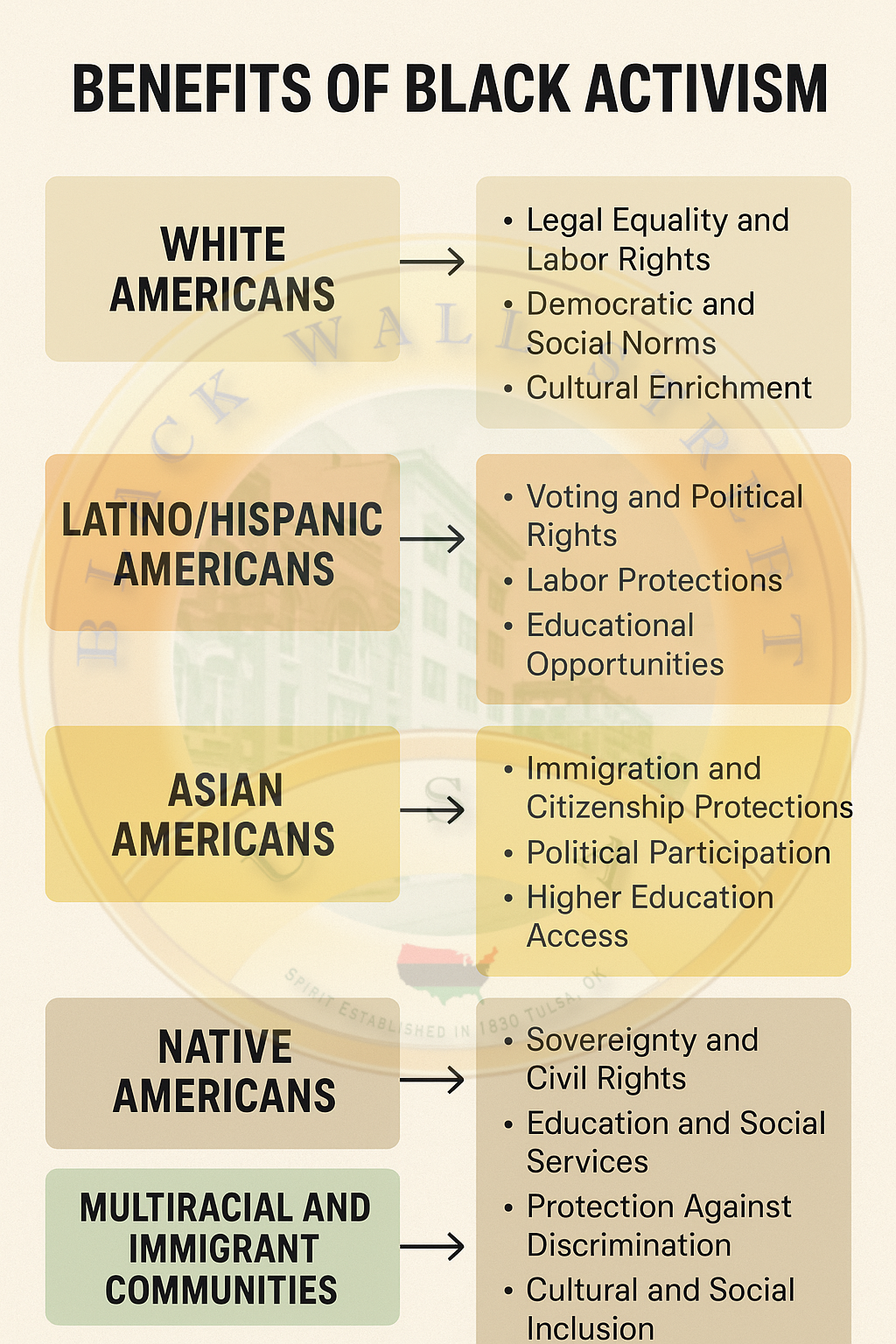
The "Trail of Tears," a name given to the brutal, deadly marches that followed, left thousands of Native Americans dead due to disease, exposure, and starvation. The land they were forced to vacate became prime real estate for white settlers who rapidly established plantations worked by enslaved African Americans. Thus, the Indian Removal Act and slavery were mutually reinforcing processes of racial domination—clearing land for economic exploitation by removing one group and then exploiting another to work it. In Mississippi, the convergence of these policies created a tragic geography of racialized expropriation and suffering.
As slavery expanded in Mississippi, so too did the mechanisms of control and resistance. Enslaved people in Mississippi frequently resisted their condition through running away, sabotaging equipment, faking illness, forming maroon communities in swamps, and maintaining cultural traditions that asserted their humanity. Slave revolts were rare due to the overwhelming violence meted out in response, but the threat of rebellion haunted slaveholders and led to increasingly oppressive laws.
The stories of enslaved Mississippians have survived in part through slave narratives, oral histories, and the transcriptions collected during the 1930s by the Federal Writers’ Project. These testimonies reveal a world of endurance, community, hope, and pain. One such narrative, that of Fountain Hughes, though based elsewhere, echoes the experience of Mississippi-born slaves who remembered the relentless field work, the cruelty of masters, and the longing for freedom. Others like Charles Ball and John Brown (different from the famous white abolitionist) offer vivid accounts of the brutality and dehumanization inherent to slavery in the Deep South.
After the Civil War and emancipation in 1865, Mississippi entered the Reconstruction era under federal military supervision. The Freedmen’s Bureau, formally known as the Bureau of Refugees, Freedmen, and Abandoned Lands, was established to assist formerly enslaved people in their transition to freedom. In Mississippi, the Bureau faced severe resistance from white elites and was chronically underfunded. It sought to provide basic education, settle labor disputes, and support Black families with food and housing. The Bureau also tried, often unsuccessfully, to secure land for the formerly enslaved. Instead, the promise of "forty acres and a mule" largely went unfulfilled, and white landowners retained control of land while Black laborers were funneled into systems of sharecropping and debt peonage that replicated many features of slavery.
Despite systemic barriers, newly freed African Americans in Mississippi built independent institutions such as churches, schools, and fraternal organizations. The African Methodist Episcopal Church (AME) expanded its reach across the South, and communities established mutual aid societies to support one another economically and spiritually. Black men voted and ran for office during Reconstruction, and Mississippi sent several Black legislators to Congress, including Hiram Rhodes Revels, the first African American to serve in the U.S. Senate. However, the end of Reconstruction and the rise of Jim Crow laws in the 1870s reimposed white supremacy through legalized segregation, voter suppression, racial terror, and lynching.
Mississippi was ground zero for many of the most egregious acts of racial violence during the post-Reconstruction era. White supremacist organizations, including the Ku Klux Klan and the White Citizens' Council, found strongholds in Mississippi towns and counties. Lynchings were carried out in broad daylight, often with impunity, and Black economic and political power was systematically crushed. Yet through it all, resistance continued. Mississippi gave rise to many civil rights laborers and freedom fighters who challenged the long shadow of slavery and segregation. Figures such as Medgar Evers, Fannie Lou Hamer, and Vernon Dahmer risked their lives to register Black voters, protest disenfranchisement, and demand justice. Many of these activists were themselves descendants of enslaved people who had once toiled in Mississippi fields.
Medgar Evers, born in Decatur, Mississippi, served as field secretary for the NAACP and was instrumental in fighting segregation and racial violence in the 1950s and 60s. He was assassinated in 1963, and his martyrdom became a rallying cry for the movement. Fannie Lou Hamer, born in Sunflower County to sharecroppers, famously declared she was “sick and tired of being sick and tired” and led powerful challenges to the Democratic Party’s racist exclusion of Black voices. Their work, along with countless unnamed foot soldiers, was rooted in a long tradition of resistance that dated back to the enslaved Africans who fought for dignity and liberation.
Contemporary Mississippi continues to bear the imprint of its slavery past. The racial wealth gap, disparities in education, health care, and incarceration, and the continued presence of Confederate monuments and symbols all point to the unfinished work of racial justice. White corporations and institutions in Mississippi that profited from slavery have often failed to reckon with their pasts. Universities like the University of Mississippi and Mississippi State University were built on land cleared of Native inhabitants and, in many cases, funded by planter class elites. Businesses that once sold supplies to plantations or traded in commodities derived from slave labor have evolved into modern corporations whose legacies are seldom publicly scrutinized.
The profound dependence of Mississippi on slave labor was not simply a historical footnote—it defined every facet of the state’s political and economic development for over a century. Cotton was called king, and in Mississippi, this was not hyperbole. Cotton accounted for the bulk of the state’s exports and linked the state to global markets in Liverpool, Manchester, and New York. The demand for cotton and the expansion of international textile markets meant that Mississippi planters constantly sought to increase the number of enslaved people under their control.
Land was not enough—labor was the lifeblood of wealth accumulation. As Mississippi became the epicenter of the cotton kingdom, enslaved Africans became the most valuable commodity in the state. By 1860, the average enslaved person was worth over $1,000, equivalent to over $30,000 today. Enslaved people were not merely farm laborers—they were blacksmiths, carpenters, seamstresses, midwives, and drivers. Their unpaid labor generated vast profits while the system of slavery consumed their lives and futures.
As Mississippi expanded economically, it also entrenched a brutal regime of racial control. Slave patrols, also known as "paddy rollers," were organized by counties to monitor enslaved populations and prevent escape or insurrection. These patrols were often composed of poor white men whose allegiance to the slaveholding class was secured through racial privilege and the promise of shared dominance over the Black population. In this way, white solidarity was constructed atop Black suffering. County jails became holding pens for captured runaways or rebellious enslaved persons, while slave markets in Natchez, Jackson, and Vicksburg conducted business with casual inhumanity. Family separations were routine, and no legal recourse existed for enslaved people whose children or spouses were sold to distant plantations.
The use of violence was not incidental but essential to Mississippi’s slave economy. Whipping, branding, shackling, rape, and execution were used to instill terror and compliance. Enslaved women faced the added horror of sexual violence, often at the hands of their enslavers, which led to children who were also born into slavery and further increased their enslaver’s wealth. Many white families owned a small number of enslaved people, while the wealthiest planters owned hundreds. These elites dominated Mississippi’s political institutions, writing laws that protected their property and penalized resistance. The state legislature consistently reinforced slave codes, while judges and sheriffs ensured that enslaved people had no access to justice. Mississippi newspapers published runaway slave ads and announcements of slave auctions alongside political editorials praising the morality and necessity of slavery.
The Mississippi state government functioned as a partner in the slavery industrial complex. The Mississippi Constitution of 1832 removed property qualifications for white male voters but retained slavery as central to the state’s legal order. Political campaigns centered on the defense of slaveholder rights, and even U.S. Senators from Mississippi, like Jefferson Davis, were staunch defenders of slavery’s expansion into new territories. Mississippi was among the first states to secede from the Union in 1861, declaring in its Articles of Secession that the “institution of slavery—the greatest material interest of the world—is thoroughly identified with the history and prosperity” of the state. This unequivocal declaration reveals slavery’s centrality to Mississippi’s self-conception and its political aggression in defending that system.
After the Civil War, Mississippi’s economy faced collapse as the enslaved workforce was emancipated. However, emancipation did not bring freedom in the full sense for formerly enslaved Mississippians. White planters, with the support of the state government, restructured slavery into new systems of racial exploitation. Sharecropping and tenant farming emerged as mechanisms to maintain Black labor in agriculture. Under these systems, Black families worked small plots of land owned by white landlords in exchange for a share of the crop, often under terms that guaranteed perpetual debt.
Credit was extended at usurious rates, often through plantation stores that were the only source of goods for miles. Illiteracy, caused by centuries of legal prohibition on slave education, further exposed freed people to manipulation and fraud. The promise of land redistribution never materialized, and the Freedmen’s Bureau, though initially active, was gradually dismantled under pressure from white elites.
The violence that undergirded slavery reemerged in new forms. Mississippi led the South in lynchings per capita, with hundreds of documented extrajudicial killings of Black men, women, and children between the 1870s and the 1950s. Lynchings were used to punish alleged infractions, often fabricated or exaggerated, and to terrorize Black communities. Many lynchings were public events, with white crowds photographing and distributing postcards of the atrocities. Law enforcement rarely intervened and frequently participated. This campaign of racial terror served to reinforce the economic subjugation of Black Mississippians, who were systematically denied access to land ownership, legal protection, fair labor conditions, and political participation.
Mississippi’s legal framework after slavery preserved white supremacy. Black Codes enacted immediately after the Civil War restricted freed people’s movement, labor rights, and access to the courts. Convict leasing laws allowed the state to arrest Black men on vague charges such as “vagrancy” or “loitering,” and lease them to private businesses and plantations for forced labor. This system, which historian Douglas Blackmon has described as "slavery by another name," was widely practiced in Mississippi. Black men arrested on dubious charges were sentenced to hard labor in chain gangs, used to build railroads, work in mines, or farm land for white businesses. The profits were shared between the state and private contractors, while the men themselves suffered horrific conditions, violence, and often death.
Even into the 20th century, the plantation economy remained central to Mississippi’s identity. While mechanization and federal policy shifted the dynamics of cotton production, the legacy of forced labor persisted in other ways. Public school systems were underfunded for Black children, agricultural extension services prioritized white farmers, and land ownership remained heavily skewed along racial lines. White banks refused mortgages to Black borrowers, and the USDA discriminated against Black farmers. This systematic exclusion from economic opportunity was not accidental—it was a direct continuation of the exclusion built into the institution of slavery.
White colleges and corporations in Mississippi reaped the benefits of this legacy. The University of Mississippi and Mississippi State University were both heavily subsidized by state revenues generated from agricultural exports tied to slavery. Campus buildings were named after slaveholders and Confederate leaders, and curricula reinforced racist ideologies well into the 20th century. Fraternities and sororities maintained segregated admissions, and many institutions actively opposed the Civil Rights Movement. Today, these universities are beginning to acknowledge their historical ties to slavery, but few have offered reparations or undertaken meaningful redistributive justice initiatives.
Several large businesses that operated in the state during and after slavery also profited from the unpaid labor of enslaved people. Banking institutions that held mortgages on slave property evolved into modern banks; shipping companies that moved cotton from Mississippi ports continue to function in global trade networks; and real estate developers built fortunes on land expropriated through Indigenous removal and Black displacement. These enterprises have rarely faced calls for accountability, and public awareness of their historical complicity remains limited.
Despite these oppressive forces, Mississippi was also the site of some of the most courageous resistance in American history. The legacy of abolitionism, while limited in the antebellum period, found renewed life in the struggle for civil rights. Individuals such as Ida B. Wells, though born in Mississippi before moving to Memphis, began their resistance to racial injustice in the aftermath of slavery’s trauma. Wells documented lynchings and exposed the barbarity of racial violence to national and international audiences. Born to formerly enslaved parents in Holly Springs, she refused to remain silent in the face of institutionalized murder and became one of the earliest investigative journalists in American history.
Fannie Lou Hamer, a sharecropper from Ruleville, was deeply shaped by the plantation economy that succeeded slavery. Her family lived in constant poverty, subjected to the whims of white landowners and denied basic rights. Her turning point came in 1962 when she attempted to register to vote and was fired from her job. Hamer’s courage in confronting the Mississippi political machine culminated in her testimony at the 1964 Democratic National Convention, where she described being beaten and humiliated for demanding the right to vote. Her words forced the nation to confront the continued denial of Black citizenship in the South.
Medgar Evers, a World War II veteran from Decatur, returned home determined to fight segregation and racial violence. As state field secretary for the NAACP, he organized voter registration drives, boycotts, and legal challenges. He exposed the complicity of law enforcement in racial violence and challenged the University of Mississippi’s segregationist policies. Evers was assassinated in his driveway in 1963, and his death galvanized the Civil Rights Movement. He was buried with full military honors in Arlington National Cemetery, a recognition of his service and sacrifice.
Mississippi was a battleground during the Freedom Summer of 1964, when activists from across the country traveled south to register Black voters and build community centers. The state responded with arrests, beatings, and murder, including the infamous killings of James Chaney, Andrew Goodman, and Michael Schwerner in Philadelphia, Mississippi. These deaths captured national attention but were only part of a broader campaign of resistance led by local Black communities who had been fighting for generations. Churches served as sanctuaries and organizing hubs, while elders passed down stories of survival and resistance rooted in slavery’s long shadow.
Even today, the legacy of slavery in Mississippi is visible in health disparities, educational inequalities, economic deprivation, and mass incarceration. The Mississippi Department of Corrections oversees one of the highest incarceration rates in the world, disproportionately affecting Black men. Many prisons are located on former plantations, most famously the Mississippi State Penitentiary, known as Parchman Farm. Founded in 1901, Parchman was designed as a working plantation using inmate labor. Black prisoners worked cotton fields under the watch of armed guards, echoing the dynamics of antebellum slavery. Despite reforms, forced labor remains legal under the 13th Amendment, and Parchman’s legacy as a penal plantation continues to raise human rights concerns.
Mississippi’s political establishment has often resisted racial progress. From the maintenance of Confederate symbols to gerrymandered districts that dilute Black voting power, the structures created to sustain slavery have mutated but not disappeared. Public policy continues to reflect the racial hierarchies that slavery imposed. Yet in every generation, Black Mississippians have fought back. They have built institutions, created culture, elected leaders, and inspired movements. From the blues music born in the Delta’s sharecropper shacks to the voices of Black preachers and activists who reshaped American democracy, Mississippi’s story is not only one of suffering—it is also one of resilience and defiance.
Mississippi’s economic, political, and social foundation was forged in slavery, refined through post-emancipation racial capitalism, and maintained through a variety of legal and extralegal mechanisms that carried forward the principles of white supremacy. Though the formal end of slavery came with the ratification of the Thirteenth Amendment in 1865, the ideology and practices that had enabled slavery to flourish in Mississippi were simply reconstituted under new guises. The years following emancipation were not defined by freedom, but by intense struggles over the meaning of liberty, citizenship, labor, and justice.
As Black Mississippians emerged from bondage, they quickly began to form communities centered around mutual support, kinship networks, and collective uplift. These freedpeople built churches, most often Baptist or Methodist in denomination, and used them not only for worship but as sites for schooling, political organizing, and social support. Churches such as the African Methodist Episcopal (AME) Church, the National Baptist Convention, and later the Church of God in Christ became essential institutions for survival. They offered education, fostered leadership, and taught the values of self-reliance, dignity, and resistance. Black pastors were often the first civic leaders in these newly formed communities and would remain so well into the 20th century.
Education was central to the aspirations of formerly enslaved Mississippians. Though it had been illegal to teach enslaved people to read and write, many had secretly learned from literate elders, sympathetic whites, or self-directed efforts. After emancipation, schools sprang up across the state with assistance from the Freedmen’s Bureau, northern missionaries, and Black communities themselves. These institutions were constantly underfunded, attacked by white supremacists, and forced to contend with dilapidated facilities, but they were nonetheless fiercely defended. Education was a key battlefield in the post-slavery South, as Black families understood that literacy and formal education were essential tools for liberation, political agency, and economic survival.
However, white Mississippians, resentful of emancipation and determined to restore their dominance, responded with organized resistance. The so-called Redeemers, conservative white Democrats who overthrew Reconstruction governments, led campaigns of terror, fraud, and disenfranchisement. In 1890, Mississippi adopted a new state constitution that included poll taxes, literacy tests, understanding clauses, and other measures designed to prevent Black citizens from voting. These methods were effective: Black voter registration plummeted from nearly 90 percent during Reconstruction to less than 6 percent by the early 20th century. The 1890 constitution remains in place today, although many of its more explicitly discriminatory provisions have been overturned.
The Redeemers also sought to control Black labor through systems of tenancy and sharecropping. These systems legally bound Black families to white landowners through one-sided contracts that left them perpetually in debt. While technically free, Black sharecroppers were forced to buy supplies on credit at high interest, could rarely accumulate enough capital to purchase their own land, and had no recourse in a legal system dominated by their former enslavers. The Mississippi Delta, the richest agricultural region in the United States, remained a landscape of Black poverty and white wealth well into the 20th century.
The Mississippi Delta, with its fertile black soil, continued to function as a plantation society long after the formal abolition of slavery. Many of the largest planters before the Civil War retained their land or reacquired it during the economic chaos of Reconstruction. By the early 1900s, Delta plantations operated with astonishing continuity: Black laborers worked cotton fields from dawn to dusk under the watchful eye of white overseers. The plantation system, in its reconstituted form, preserved many of the essential dynamics of slavery, and many of the social relationships endured as well. The paternalism, deference, and threats of violence that marked slavery were reproduced in the sharecropping economy, and Black mobility remained tightly controlled by white power brokers.
As Jim Crow laws spread across the South, Mississippi became one of the most rigidly segregated and violently repressive states. Public accommodations, transportation, education, and housing were segregated by law and custom. The Mississippi state legislature worked tirelessly to reinforce white supremacy, and local law enforcement officers functioned more as enforcers of racial hierarchy than of justice. These practices were not only supported but celebrated by much of the white population, many of whom were direct beneficiaries of slavery’s economic legacy.
Meanwhile, corporations in Mississippi continued to build wealth through racial exploitation. Timber, railroads, cotton processing, and later oil and chemicals became major industries. Many of the same families who had grown rich on slave labor reinvested in these industries and used their influence to maintain low Black wages and prevent union organizing. Black workers were paid less, excluded from skilled trades, and relegated to the most dangerous and least stable jobs. Company towns, especially in the lumber industry, created closed economic systems that trapped Black laborers in cycles of debt and dependency. These corporations often contributed to political campaigns and policies that reinforced the very segregation and disenfranchisement that allowed them to exploit Black workers.
Colleges and universities in Mississippi benefited both directly and indirectly from this legacy. The University of Mississippi, Mississippi State, and other state institutions were established with land and funding that originated from systems of labor and land theft rooted in slavery. Though historically white institutions remained closed to Black students until forced integration in the mid-20th century, they trained generations of white elites who carried forward the cultural and political ideologies of the antebellum South. These universities often ignored or misrepresented the history of slavery and Reconstruction, presenting a sanitized narrative of the state’s past that glorified the Confederacy and minimized the horrors of bondage.
Historically Black colleges and universities (HBCUs) such as Jackson State University, Alcorn State University, and Mississippi Valley State University arose as critical institutions for Black Mississippians seeking education, professional advancement, and community uplift. These schools faced chronic underfunding and unequal treatment by the state legislature, even though they served a disproportionately impoverished and marginalized population. Still, they played an essential role in nurturing the leaders, educators, and activists who would power the Civil Rights Movement and challenge the enduring structures of racism in the state.
The legal system in Mississippi has long reflected the values and structures inherited from slavery. Black people have been over-policed, over-sentenced, and disproportionately incarcerated in Mississippi for generations. This reality finds its roots in the Black Codes and vagrancy laws of the postbellum era, which criminalized poverty, unemployment, and resistance. Convict leasing persisted well into the 20th century, and the racial disparities in sentencing remain stark. The Mississippi prison system is notorious for its harsh conditions, lack of oversight, and racial abuses. As mentioned earlier, the infamous Parchman Farm operated as a de facto continuation of plantation slavery, with Black inmates forced to labor in cotton fields and subjected to cruel punishments.
The cultural memory of slavery in Mississippi was, for much of the 20th century, distorted or erased in public discourse. Confederate monuments, which began to appear during the Jim Crow era, littered courthouse lawns and public parks. These monuments celebrated figures who fought to preserve slavery and were often erected during periods of Black political activity as warnings and expressions of white supremacy. Public school textbooks taught revisionist histories that praised the antebellum South and described enslaved people as “content.” Generations of Mississippians grew up in a society where slavery was not condemned, but romanticized.
This distortion of history created significant barriers to justice and reconciliation. Mississippi was the last state to ratify the Thirteenth Amendment in symbolic terms, waiting until 2013 to officially submit its paperwork to Congress. The state resisted integration at every turn, including the violent standoff over James Meredith’s enrollment at the University of Mississippi in 1962. Meredith, a Black Air Force veteran, faced riots and violence when he attempted to exercise his constitutional right to education. Federal troops were eventually deployed to enforce the law, but the incident underscored the state’s deep commitment to racial hierarchy.
Despite these conditions, Mississippi has also produced some of the most visionary and courageous voices for justice. The Mississippi Freedom Democratic Party, co-founded by Fannie Lou Hamer, sought to challenge the exclusion of Black voters and delegates from the Democratic Party’s national structure. SNCC (Student Nonviolent Coordinating Committee) organized voter registration drives, Freedom Schools, and community programs under constant threat of violence. Mississippi’s Black community produced journalists, poets, teachers, and activists who refused to accept the legacy of slavery as destiny.
In the present day, the economic consequences of slavery remain deeply embedded in Mississippi’s socioeconomic landscape. The state has some of the highest rates of poverty, lowest educational attainment, and worst health outcomes in the nation—conditions that disproportionately affect Black Mississippians. The racial wealth gap, created by centuries of enslavement, exclusion from land ownership, unequal education, and employment discrimination, continues to shape opportunity and access. Public policy has rarely addressed these disparities with the urgency they demand, and many white political leaders remain unwilling to confront the full extent of the state’s complicity in racial injustice.
At the same time, grassroots organizations, scholars, and cultural institutions have begun to recover and elevate the histories that were long silenced. The Mississippi Civil Rights Museum, opened in 2017, confronts the legacies of slavery and segregation through powerful exhibits and community engagement. Local historians and descendants of enslaved people are compiling family histories, preserving oral narratives, and restoring cemeteries where the unmarked graves of enslaved people lay. Scholars are documenting the ways in which corporate entities and institutions of higher education benefited from slavery and continue to profit from its aftermath. Though progress is uneven and contested, these efforts represent a growing recognition of the need for truth-telling, accountability, and reparative justice.
The legacy of slavery in Mississippi is not an abstraction—it is woven into the land, the buildings, the laws, and the people. It is found in the bones buried beneath cotton fields, in the names of towns and roads, in the genealogies of families Black and white. It is present in the labor systems that emerged after emancipation, the economic structures that govern the state, and the ideologies that persist in political and social life. Yet Mississippi’s history is also a testament to survival and resistance. The very people who were enslaved built families, communities, cultures, and institutions that endured despite the most brutal conditions. Their descendants have continued the struggle, drawing strength from the resilience of their ancestors and demanding a future that reckons with the past.
The depth and complexity of slavery’s imprint on Mississippi is nowhere more evident than in the cultural, legal, and psychological architecture that was erected to preserve its existence and justify its expansion. Slavery in Mississippi was not a temporary labor solution or a mere byproduct of southern tradition—it was a violently enforced, legally sanctioned system of racial capitalism that shaped every institution in the state. Its influence persists not only in the enduring economic disparities but also in the subtle and overt ways that race continues to function as a determinant of opportunity, safety, identity, and voice in Mississippi life.
In the antebellum period, Mississippi’s planters and political elite used religion, pseudoscience, and propaganda to justify the system of slavery. Many white ministers preached from pulpits that slavery was divinely sanctioned, drawing from selected scriptures and ignoring the broader ethical calls for justice. Slaveholders distributed tracts and hosted religious services meant to pacify enslaved people, all while denying them access to genuine theological literacy or free worship.
Enslaved Black people often developed clandestine religious practices, blending African spiritual traditions with Christian themes of liberation, justice, and divine intervention. These secret gatherings—often held at night in the woods or in slave quarters—fostered a spiritual culture centered on survival, hope, and resistance. The concept of deliverance, embodied in Biblical narratives such as the Exodus, resonated deeply and formed the bedrock of what would later become the Black Church in Mississippi.
The intellectual defense of slavery among Mississippi elites was no less aggressive. Academics, politicians, and journalists wrote extensively to rationalize the ownership of human beings. Mississippi newspapers regularly published editorials defending slavery as a civilizing force, a necessary social order, or an economic imperative.
Scientists from Southern universities supported theories of racial hierarchy and biological determinism to explain the supposed inferiority of Black people. These ideologies were embedded in school curricula, legal arguments, and sermons, creating a circular logic that enslaved people because they were seen as inferior and then pointed to their enslaved condition as proof of that inferiority. Education and access to knowledge were viewed by the ruling class as dangerous tools in the hands of the enslaved. As a result, Mississippi enforced some of the strictest anti-literacy laws in the nation. White citizens were prohibited from teaching enslaved people to read or write, and those who did risked fines and imprisonment. Enslaved individuals caught reading faced brutal punishment.
Still, literacy persisted in secret, passed down by elders or taught by free Black people or sympathetic whites. The ability to read and interpret the Bible, abolitionist literature, or even a plantation ledger was a powerful act of defiance. Some enslaved Mississippians forged passes to escape or copied abolitionist pamphlets to circulate among others. These acts reflected not only the intellectual hunger of the enslaved but their desire to reclaim their stolen personhood.
Resistance to slavery in Mississippi took many forms—some violent, others covert, all courageous. Enslaved people poisoned food, destroyed tools, set fires, feigned illness, worked slowly, or escaped. The Natchez Trace became a known route for runaway slaves, as did the dense forests of the Delta and the swamplands of the Gulf Coast. Maroon communities, though rare in Mississippi compared to other parts of the South, did exist and offered shelter to fugitives. Stories of resistance spread by word of mouth and song, building an oral tradition that kept alive the hope of freedom.
Even within the brutal confines of slavery, Black Mississippians built families, passed on knowledge, and formed communities of care. The legal system did not recognize slave marriages, but many enslaved people held wedding ceremonies and sought to live in nuclear family units despite the ever-present threat of separation. Parenting under slavery was an act of resistance—ensuring that children knew their heritage, values, and worth in a system designed to erase their identity. Naming practices also became a subtle form of resistance: African names, biblical references, and coded messages embedded in names allowed enslaved people to assert lineage, faith, and agency.
Mississippi’s participation in the domestic slave trade expanded dramatically between 1820 and 1860. As new lands were seized from Native nations and opened for white settlement, the demand for enslaved labor skyrocketed. The state became a major hub in the internal human trafficking system that moved hundreds of thousands of people from Virginia, Maryland, and the Carolinas into the Deep South. This forced migration—often referred to as the Second Middle Passage—tore families apart, concentrated wealth in fewer hands, and gave rise to some of the largest and most brutal plantations in the United States. The trauma of this migration cannot be overstated: children were ripped from their mothers, spouses from one another, and communities from their roots.
Natchez, Mississippi, became one of the most prominent centers of slave trading in the region. The Forks of the Road slave market, located just outside Natchez, was one of the largest in the country. Thousands of men, women, and children were sold there, often in conditions that rivaled the dehumanization of the Middle Passage.
Traders advertised their “cargo” with euphemistic descriptions of physical strength or temperament. Buyers inspected human beings like livestock, and families were deliberately broken up to fetch the highest possible prices. The wealth generated in these markets was immense. White families established generational wealth through the purchase and exploitation of enslaved people, passing down fortunes derived from human misery.
The Civil War brought formal emancipation, but not a transformation in power. When federal troops occupied Mississippi, enslaved people often fled plantations to seek refuge. Many enlisted in the Union Army, particularly after the Emancipation Proclamation in 1863.
Black Mississippians fought in the United States Colored Troops (USCT), contributing to the Union victory and claiming a stake in the nation's future. However, their service was met with hostility. After the war, white Mississippians launched a coordinated effort to retake power. The violence of Reconstruction included massacres such as the Clinton Riot of 1875, where white supremacists killed dozens of Black people to suppress political participation and restore white rule.
Reconstruction brought hope but also profound disappointment. The brief window in which Black Mississippians could vote, hold office, and build schools was closed by 1877, when federal troops were withdrawn. The white political class wasted no time enacting laws that reasserted control. Convict leasing, as practiced in Mississippi, was an outright extension of slavery. The state would arrest Black men on dubious charges, convict them in kangaroo courts, and lease their labor to private businesses, especially railroads, plantations, and mines. This system was wildly profitable and operated with near-total impunity. Conditions were often worse than those on antebellum plantations: men were whipped, starved, overworked, and killed. Women, too, were caught in this net—incarcerated and leased out for domestic labor or field work.
The parallels to slavery were not accidental—they were structural. Mississippi’s entire system of criminal justice, labor policy, and racial control was designed to preserve white supremacy and Black exploitation. The “Black Belt” counties—so named for their rich soil but also indicative of their racial demographics—remained sites of profound inequality. These counties, especially in the Delta, had some of the highest concentrations of Black residents in the nation, and they bore the brunt of the state’s policies of neglect, underinvestment, and repression.
During the Great Migration, many Black Mississippians fled north and west, seeking opportunity and escape from the crushing weight of Jim Crow. Cities like Chicago, Detroit, Cleveland, and Los Angeles became destinations for Mississippi’s Black refugees. They carried with them the culture, spirituality, resilience, and trauma of the South. Blues music, born in the Delta’s fields and juke joints, traveled north and gave birth to American genres that shaped the 20th century. The voices of Mississippi’s displaced would echo in the halls of labor unions, civil rights movements, and creative spaces across the country.
Yet many stayed behind, rooted to the land their ancestors worked and claimed as home. These Mississippians became the backbone of the Civil Rights Movement. Churches provided sanctuary, strategy, and sustenance. Schools, though underfunded, produced generations of brilliant minds. Community organizers, teachers, preachers, and farmers formed the infrastructure of resistance. They risked jobs, homes, and lives to challenge segregation, register voters, and teach the next generation. The Mississippi Freedom Summer of 1964 brought national attention to the state’s brutality but also its courage. Volunteers, often young and idealistic, joined local Black residents in the fight for justice. Many were beaten, jailed, or killed—but the movement continued.
In the post–Civil Rights era, Mississippi’s legacy of slavery has continued to manifest in structural inequalities. The Black population, which comprises nearly 40 percent of the state, continues to face higher poverty rates, lower educational outcomes, and limited political representation. Access to healthcare, quality schools, and employment opportunities remains sharply divided by race. Prisons, now often privately operated, disproportionately incarcerate Black Mississippians. State-level policies regarding voting rights, welfare, and public spending often reflect a continuing disregard for the descendants of the enslaved.
Yet a reckoning is slowly unfolding. Scholars, artists, and activists are reclaiming the narratives that were long buried. The work of institutions like the William Winter Institute, the Mississippi Civil Rights Museum, and local heritage foundations is beginning to unearth the buried stories of enslaved people and their descendants. Land acknowledgments are highlighting the dispossession of Native nations like the Choctaw and Chickasaw, whose removal made slavery’s expansion possible. Educational reform efforts are pushing for a more honest and comprehensive curriculum on slavery, racism, and resistance.
Some corporations and universities are beginning to investigate their historical ties to slavery. The University of Mississippi has faced pressure to reckon with its Confederate iconography, its history of exclusion, and the names of buildings that honor white supremacists. While symbolic changes have been made, deeper transformations remain elusive. Reparations, land return, and meaningful investment in Black communities have not yet emerged as serious policy agendas in Mississippi, but grassroots demands are growing stronger.
The role of women in Mississippi’s history of slavery and resistance is also receiving long-overdue attention. Enslaved women were the victims of unique forms of violence: sexual exploitation, forced breeding, and domestic servitude. But they were also healers, midwives, spiritual leaders, and organizers. Women like Fannie Lou Hamer and Unita Blackwell emerged from the most marginalized circumstances to become visionary leaders. Their legacies speak to the power of the Black Southern woman as a political force, a truth-teller, and a community builder.
As Mississippi continues to grapple with its past, the descendants of enslaved people are leading the call for justice. From reparations proposals to land claims, from educational equity to cultural preservation, the work of dismantling slavery’s legacy is both a moral and material imperative. This work must be guided by the principle that history is not static, nor are its consequences. The plantations may now be bed-and-breakfasts or museums, but their legacy is not behind us—it is beneath us, around us, within us.
To understand the complete legacy of slavery in Mississippi, one must acknowledge that its physical and psychological terrain was carved not only by chains and cotton but by generations of systemic policy that continuously evolved to subjugate African Americans under new names. Though slavery was legally abolished in 1865, the reality of Black life in Mississippi has often been shaped by systems that replicated the dynamics of enslavement: enforced labor, property deprivation, limited political representation, and coerced social immobility.
A critical element in this historical continuum was the manipulation of land ownership. At the end of the Civil War, formerly enslaved individuals saw land ownership as the cornerstone of freedom. To till their own soil, to eat from their own harvests, and to provide for their families without white oversight symbolized the long-denied autonomy they had dreamed of for generations. However, Black Mississippians were systematically denied this opportunity. The U.S. government’s failure to redistribute land, combined with Southern state laws and terrorist tactics, ensured that the vast majority of Black people in Mississippi remained landless laborers well into the 20th century.
The sharecropping system—designed under the guise of economic partnership—trapped Black families in a cycle of debt and dependency. Landowners controlled not only the terms of production but also dictated the costs of goods, seeds, tools, and even housing. Many sharecroppers were paid in scrip that could only be spent at plantation-owned stores, further reinforcing economic bondage. Moreover, white landlords manipulated bookkeeping to keep Black families in permanent arrears, essentially locking them into servitude with no legal remedy. The legal system, made up of former slaveholders and their descendants, offered no protection. By denying African Americans the ability to build wealth, own land, and accumulate capital, Mississippi recreated slavery’s economic model under another name.
This cycle of racialized poverty was further reinforced through violent enforcement. White supremacist groups such as the Ku Klux Klan and the White Citizens’ Council used lynching, arson, and economic retaliation to maintain racial hierarchy. A Black family that dared to challenge exploitative conditions, that attempted to buy land, or that insisted on a fair share of the crop, risked deadly reprisal. Mississippi led the nation in documented lynchings—each one not only a horrific murder but a public message to all Black residents: stay in your place or suffer the consequences. Lynching became a tool of economic discipline as much as social control. It ensured the labor force remained compliant, fearful, and exploitable.
The institutions built to sustain white wealth—banks, insurance companies, agricultural cooperatives, and governmental agencies—were designed to exclude Black people. Credit was rarely extended to Black farmers. Federal programs such as the New Deal’s Agricultural Adjustment Act offered subsidies and assistance that disproportionately benefited white landowners. The U.S. Department of Agriculture (USDA), which managed many of these initiatives, was complicit in discriminatory lending and land seizure practices. Many Black families who managed to acquire land lost it through legal chicanery, bureaucratic theft, and outright fraud—often with the complicity of county agents and judges.
Even education—perhaps the most consistent site of hope and advancement—was deeply compromised by racial inequality. Mississippi’s dual system of public education ensured that Black schools were underfunded, overcrowded, and neglected. School buildings for Black children were often unheated, lacked plumbing, and were built on flood-prone or undesirable land. Teachers were underpaid and overburdened, with some responsible for educating over 100 students at a time. Black children were given hand-me-down textbooks that were often missing pages, covered in racial graffiti, or 20 years out of date. These conditions were not accidental; they were the result of deliberate policy choices by local and state officials who believed education would “spoil” the submissiveness they sought in Black laborers.
Despite this, Black Mississippians cultivated excellence. Teachers, often among the most respected members of their communities, worked under impossible conditions to instill knowledge, pride, and discipline in their students. Black colleges such as Tougaloo College, Rust College, and Alcorn State University became sanctuaries of higher learning and resistance. These institutions produced lawyers, doctors, teachers, and organizers who would go on to challenge Mississippi’s caste system. The students and faculty of these colleges were deeply involved in the Civil Rights Movement, using their campuses as staging grounds for protests, sit-ins, and political mobilization.
Mississippi's historical resistance to the Civil Rights Movement was ferocious. Its white political establishment viewed Black activism as an existential threat. State agencies such as the Mississippi State Sovereignty Commission operated as surveillance and propaganda units, infiltrating Black organizations, photographing activists, compiling dossiers, and even collaborating with white supremacist groups. Law enforcement officials frequently brutalized peaceful demonstrators, and sheriffs openly defied federal court orders. The state functioned as a regime committed to apartheid, wielding every tool of government to suppress Black voices and aspirations.
At the same time, the creativity and ingenuity of Black resistance in Mississippi reached extraordinary levels. Freedom Schools were launched to teach political theory, Black history, and civic engagement to students deliberately excluded from the state’s whitewashed curriculum. Community centers provided adult education, childcare, and legal aid. The grassroots infrastructure built during this era was astonishing in its scope, considering the danger involved. Activists knew they could be beaten, jailed, or killed for registering voters—but they pressed forward, motivated by the legacies of those who had fought centuries earlier for the right to be seen as human.
The memory of slavery was never far from their minds. Many elders who participated in the movement were themselves the grandchildren or great-grandchildren of enslaved people. They had grown up hearing the stories of “the time before freedom,” of mothers sold away, of backs scarred by whips, of babies taken at birth. These memories were not historical footnotes—they were living legacies that shaped Black identity in Mississippi. The land they tilled, the churches they built, the songs they sang—these were all infused with the legacy of those who endured slavery and survived it with their dignity intact.
Today, the question of slavery’s legacy in Mississippi remains unresolved. While the state no longer openly practices the brutalities of the 19th century, its modern institutions continue to replicate many of the same outcomes. Incarceration rates for Black Mississippians are exponentially higher than for whites. Black communities face food insecurity, school closures, underemployment, and environmental hazards at far higher rates. The economic foundation built on slavery has been passed down through generations of white families, while the descendants of the enslaved have struggled to accumulate wealth in a system still shaped by racial exclusion.
Corporate complicity has remained largely unacknowledged. Many of the banks that now operate in Mississippi once accepted enslaved people as collateral for loans. Insurance companies wrote policies on slave lives. Railroad companies built wealth transporting cotton and enslaved laborers. Chemical companies dumped pollutants near Black communities, reinforcing the environmental racism born out of slavery-era spatial hierarchies. Real estate firms profited from redlining, segregated development, and the systematic disinvestment in Black neighborhoods. These modern entities owe their economic status in no small part to the systems of exploitation inaugurated by slavery.
Higher education, too, has begun a slow and often reluctant reckoning. While some institutions have issued public statements acknowledging ties to slavery, few have moved beyond symbolic gestures. The call for reparative justice—from scholarships and land transfers to investment in majority-Black public schools and community development—remains largely unanswered. As public discourse around reparations gains traction, Mississippi’s institutions face increasing pressure to account for their foundational ties to forced labor and racial capitalism.
What remains most urgent, however, is the need for a collective moral reckoning. The legacy of slavery in Mississippi is not simply a matter of historical interest—it is a present-day crisis of justice. The physical spaces remain: plantation houses now operating as wedding venues or tourist sites, Black cemeteries overgrown and forgotten, downtown banks built atop profits from human trafficking. These are not relics—they are active participants in a cultural amnesia that benefits from forgetting. Meanwhile, the communities who bear the scars of this past are expected to be silent, forgiving, and “resilient.”
But Black Mississippians have not forgotten. They are reclaiming land, retelling history, and redefining freedom. From grassroots land trusts to oral history projects, they are preserving the memory of their ancestors—not as victims, but as visionaries. From descendants of enslaved people who return to Mississippi to farm ancestral lands, to artists who create murals honoring Black abolitionists, to scholars who excavate lost narratives from archives and family records, a new generation is refusing to allow silence to prevail.
Mississippi has a choice. It can continue to deny, delay, and deflect the truth of its origins, or it can lead. It can become a model for reparative justice, for public remembrance, for educational reform that teaches slavery not as a footnote, but as the central thread of American history. It can invest in the communities it once pillaged. It can pay back what was stolen—not just in dollars, but in land, opportunity, and recognition. It can do these things because it must, not because of guilt, but because of responsibility.
Responsibility to the people who picked cotton until their fingers bled. Responsibility to the children sold on courthouse steps in Natchez and Vicksburg. Responsibility to the mothers who gave birth in chains. Responsibility to the freedom fighters who bled in Sunflower County and died in Philadelphia, Mississippi. Responsibility to the enslaved laborers who cleared the land, built the roads, harvested the wealth, and received nothing in return. Responsibility to truth. Responsibility to justice. Responsibility to the future.
And in that future, perhaps Mississippi can finally shed its title as one of America’s most racially divided states and become instead a place where memory leads to healing, where justice follows acknowledgment, and where the descendants of the enslaved are finally granted not only freedom—but restoration.

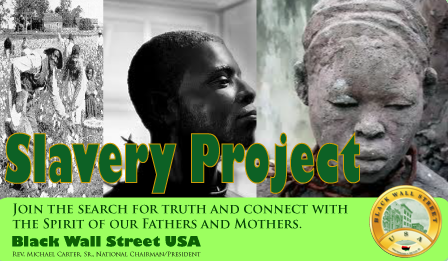
Alabama
Alaska
Arizona
Arkansas
California
Colorado
Connecticut
Delaware
Florida
Georgia
Hawaii
Idaho
Illinois
Indiana
Iowa
Kansas
Kentucky
Louisiana
Maine
Maryland
Massachusetts
Michigan
Minnesota
Mississippi
Missouri
Montana
Nebraska
Nevada
New Hampshire
New Jersey
New Mexico
New York
North Carolina
North Dakota
Ohio
Oklahoma
Oregon
Pennsylvania
Rhode Island
South Carolina
South Dakota
Tennessee
Texas
Utah
Vermont
Virginia
Washington
West Virginia
Wisconsin
Wyoming
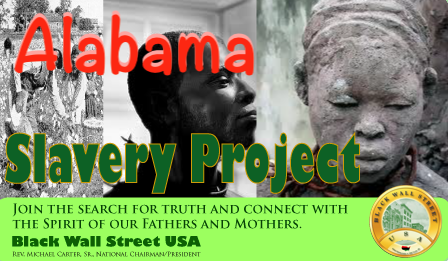
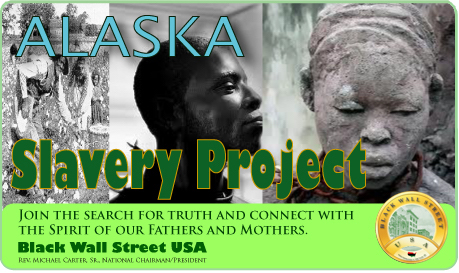



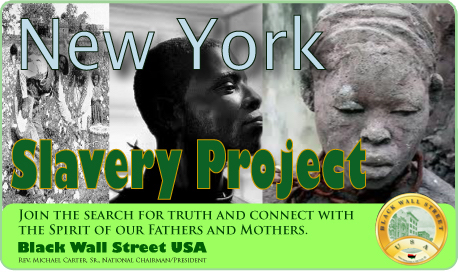

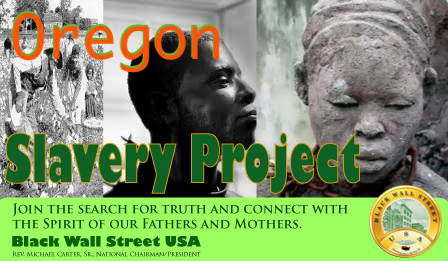
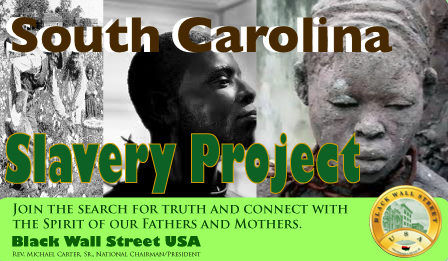
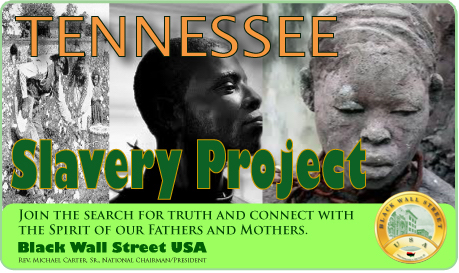
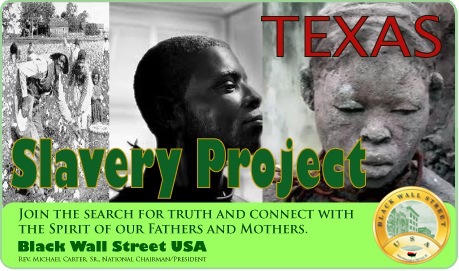



BlackWallStreet.org

Slave Records By State
See: Slave Records By State
Freedmen's Bureau Records
See: Freedmen's Bureau Online
American Slavery Records
See: American Slavery Records
American Slavery: Slave Narratives
See: Slave Narratives
American Slavery: Slave Owners
See: Slave Owners
American Slavery: Slave Records By County
See: Slave Records By County
American Slavery: Underground Railroad
See: American Slavery: Underground Railroad

